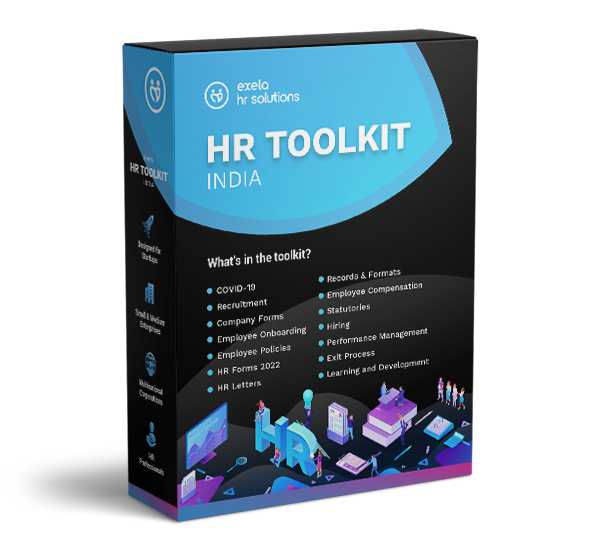
In the rapidly evolving landscape of modern business, staying ahead of the curve is not just a competitive advantage – it's a necessity. Among the many facets of a successful organization, payroll management stands as a critical and often underestimated pillar of efficiency. As we usher in the year 2024, it's imperative for organizations to recognize the pivotal role of HR payroll software and the pivotal trends that will shape it in the coming year.
Payroll is the lifeblood of any organization, the beating heart that ensures employees are compensated accurately and on time. In this digital age, where manual processes are gradually becoming relics of the past, HR payroll software has been on a transformational journey. From automating tedious tasks to improving data accuracy and compliance, these software solutions have come a long way. Yet, the journey is far from over, and 2024 promises to bring a new chapter in the evolution of HR payroll software.
The importance of embracing these evolving trends in HR payroll software cannot be overstated. Organizations that adapt to the changing landscape will not only optimize their payroll processes but also empower their employees, streamline financial operations, and ensure they remain compliant with ever-shifting regulations.
This blog will help organizations elevate their payroll game in 2024 and beyond. Whether you are part of a small startup or a well-established enterprise, the trends we'll explore here have the potential to reshape the way you handle payroll processes from the mundane to the strategic. Dive in below to learn more about these payroll software trends.
Key Trends in HR Payroll Software for 2024
Here are the key trends in HR payroll software that organizations should watch out for in 2024. These trends are poised to reshape the way businesses manage their payroll processes and employee data, enhancing efficiency, accuracy, and overall payroll management.
-
Cloud-Based Solutions
- Benefits of migrating to cloud-based HR payroll systems: Cloud-based HR payroll software offers organizations the advantage of data accessibility, scalability, and flexibility. This trend is set to continue growing as more businesses recognize the benefits of migrating to the cloud. With cloud solutions, businesses can access payroll data from anywhere, ensuring that remote work or traveling employees can easily manage payroll-related tasks. This flexibility has proven invaluable, especially during unforeseen disruptions, such as the COVID-19 pandemic.
-
Artificial Intelligence (AI) and Machine Learning
- Automation of payroll processes: AI and machine learning are revolutionizing payroll through automation. From automating routine tasks like data entry to making complex calculations, these technologies save time and reduce the potential for errors. In 2024, we can expect AI-driven payroll software to become even more proficient in tasks like processing tax deductions, tracking hours worked, and managing various benefit programs.
- Predictive analytics for accurate forecasting: AI and machine learning can also analyze historical payroll data to provide insights into future workforce costs. This allows organizations to make more informed budgeting decisions, predict hiring needs, and optimize their compensation and benefits structures.
- AI-driven data security measures: With the rise of cyber threats, AI is being used to enhance data security. In 2024, payroll software is expected to include AI-driven security measures such as anomaly detection, which can identify and respond to unusual patterns in data access and usage, thus safeguarding sensitive payroll information.
-
Employee Self-Service Portals
- Empowering employees with self-service options: Employee self-service portals are becoming an integral part of HR payroll software. These portals are likely to become even more user-friendly and comprehensive. Employees can access and manage their payroll-related information, from viewing pay stubs and tax documents to requesting time off or updating personal details. This not only empowers employees but also reduces the administrative burden on HR and payroll teams, freeing them to focus on more strategic tasks.
-
Compliance and Data Security
- Evolving payroll regulations in 2024: Payroll regulations are constantly changing, with tax laws, labor regulations, and reporting requirements subject to updates. HR payroll software will continue to provide automatic updates and reminders to help organizations stay compliant. Payroll software will keep track of changing regulations across various regions and adapt to them, minimizing the risk of non-compliance.
-
Mobile Payroll Apps
- The growing importance of mobile accessibility: As the workforce becomes more mobile, the importance of mobile payroll apps is on the rise. These apps allow employees to access their payroll information and perform payroll-related tasks on their smartphones. In 2024, expect to see enhanced functionality, user interfaces, and security features in these apps.
-
Integration with HR and Finance Systems
- Streamlining data flow between HR, payroll, and finance departments: Integration between HR, payroll, and finance systems will become more seamless. This integration will ensure that data flows smoothly between these departments, reducing the risk of data discrepancies and enhancing overall efficiency. Organizations will be able to track and manage their workforce costs more effectively by having all relevant data in one place.
-
Customization and Scalability
- Tailoring payroll software to specific organizational needs: One size does not fit all when it comes to payroll. Payroll software is anticipated to offer greater customization options, allowing organizations to tailor their payroll processes to match their unique requirements. Scalability will also be a key consideration, ensuring that payroll systems can grow alongside the organization's needs.
Also Read: Navigating Payroll Challenges in SMEs: A Comprehensive Guide
Preparing Your Organization for the HR Payroll Software Trends of 2024
Preparing your organization for the emerging payroll software trends is crucial for staying competitive and efficient in the evolving business landscape. Here, we'll delve into the steps and considerations that can help your organization get ready for the changes and advancements in HR payroll software.
-
Assessing Your Current Payroll System:
Before you can embrace the trends of 2024, it's essential to understand where you currently stand. Start by conducting a comprehensive evaluation of your existing payroll system. Identify its strengths and weaknesses, pinpoint areas where improvements are needed, and assess how well it aligns with your organization's objectives and growth plans.
-
Budgeting and Resource Allocation:
Implementing new HR payroll software or upgrading your existing system will likely require a budget. This budget should cover the software itself, hardware (if necessary), training for your team, and ongoing support and maintenance. Allocate the required financial and human resources to ensure a smooth transition.
-
Selecting the Right Software Providers and Solutions:
Choose software providers and payroll outsourcing providers that align with your organization's needs, objectives, and budget. Research different providers, read user reviews, and request demos to see the software in action. Make sure the software offers the features and capabilities required to support the trends of 2024, such as AI, automation, cloud accessibility, and mobile app functionality.
-
Employee Training and Change Management Strategies:
Transitioning to new HR payroll software or adopting advanced features can be a significant change for your employees. Develop a comprehensive training plan to ensure that your team is proficient in using the new software. This training should cover not only the technical aspects but also any changes in processes or workflows. Additionally, create a change management strategy to help employees adapt to the changes smoothly, emphasizing the benefits and how it will make their work easier and more efficient.
-
Data Migration and Testing:
If you're migrating from an existing system, ensure a smooth data transition. Data accuracy is paramount in payroll processing, so thorough testing is crucial. Verify that all historical payroll data, employee records, and compliance information are accurately transferred to the new system. Conduct testing with a select group of employees or in a controlled environment to catch any issues before a full-scale rollout.
-
Security and Compliance Considerations:
Data security and compliance are of utmost importance when it comes to payroll. Ensure that your new software is equipped with robust security measures and encryption protocols. Regularly update your security practices to stay ahead of potential threats. Moreover, pay close attention to the software's ability to adapt to changing payroll regulations, which is crucial for avoiding non-compliance and costly penalties.
-
Collaboration and Communication:
Transparent communication is vital when implementing new payroll software or transitioning to advanced features. Keep your employees, especially those responsible for payroll and HR functions, informed about the changes, the timeline, and their roles in the transition. Encourage feedback and address concerns promptly. A collaborative approach will lead to a smoother adoption process.
-
Continuous Evaluation and Improvement:
Once your organization has implemented the ideal payroll software, establish a system for continuous evaluation and improvement. Regularly assess how well the software is meeting your organization's needs and consider feedback from employees. Use this feedback to make necessary adjustments and updates to ensure that the software continues to support your organization effectively.
Conclusion
In the fast-evolving landscape of payroll processing, readiness is paramount. As 2024 approaches, organizations need to be proactive in embracing the key trends to enhance efficiency, accuracy, and compliance. It's clear that the future of HR payroll software is promising, with advancements like AI, cloud-based solutions, and employee self-service portals.
Exela HR Solutions stands as a dependable partner in this journey toward optimal payroll management. Offering best-in-class payroll services, Exela HR Solutions brings extensive expertise to help organizations adapt to these trends seamlessly. With our solutions, organizations can efficiently handle complex payroll calculations, ensure data security, and empower employees through self-service portals while staying compliant with evolving regulations. Our best-in-class payroll outsourcing services play a vital role in ensuring that businesses are prepared to excel in the ever-competitive and dynamic landscape of payroll management.
DISCLAIMER: The information on this site is for general information purposes only and is not intended to serve as legal advice. Laws governing the subject matter may change quickly, and Exela cannot guarantee that all the information on this site is current or correct. Should you have specific legal questions about any of the information on this site, you should consult with a licensed attorney in your area.





